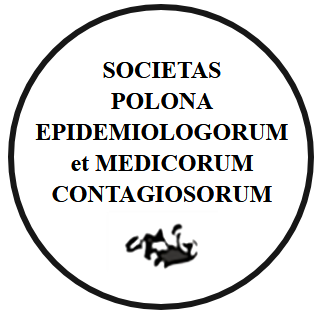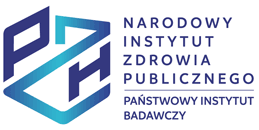RESEARCH PAPER
Hepatitis C in Poland in 2022
1
Department of Epidemiology of Infectious Diseases and Surveillance, National Institute of Public Health NIH – National Research Institute, Polska
Submission date: 2024-07-04
Final revision date: 2024-08-01
Acceptance date: 2024-08-02
Online publication date: 2024-08-02
Publication date: 2024-09-18
Corresponding author
Karolina Zakrzewska
Department of Epidemiology of Infectious Diseases and Surveillance, National Institute of Public Health NIH – National Research Institute, Polska
Department of Epidemiology of Infectious Diseases and Surveillance, National Institute of Public Health NIH – National Research Institute, Polska
Przegl Epidemiol 2024;78(2):234-249
KEYWORDS
TOPICS
ABSTRACT
Background: The war invasion of Ukraine in February 2022 led to mass migration. By January 3, 2023, nearly a million people sought refuge in Poland. The Polish Act on Assistance to Ukrainian Citizens provided comprehensive support, ensuring legal residence, free medical insurance, social benefits, and access to education and employment. Simultaneously, the global public health crisis persisted, with the fifth wave of the COVID-19 pandemic driven by the Omicron variant. The epidemic state in Poland was lifted on May, 2022. Objective: This paper aims to summarize the epidemiological situation of HCV infections in Poland in 2022, a year characterized by dual crises. Material and methods: Epidemiological surveillance case-based data on HCV for 2022, diagnosis rates from bulletins for the years 2014-2022, and the number of deaths for 2022 from Statistics Poland were compared with previous years' data. Results: In 2022, the rate of new HCV diagnoses rose to 6.68 per 100,000, totaling 2,528 cases (a 46% increase from the previous year). Polish nationals accounted for 87% of cases. Gender distribution was equal. There was an overall increase in HCV diagnoses across all voivodeships, with a return to pre-pandemic trends observed only in Zachodniopomorskie. Diagnoses were predominantly made in primary healthcare (one-third) and during hospitalization (one-fourth). Twenty-six cases of acute hepatitis C (1%, PL definition) were identified. At diagnosis, 5.6% of infected showed signs of liver damage. Hepatitis C was responsible for 86 deaths. Imported infections accounted for 5.7% of cases. 2.7% of HCV infections in 2022 were diagnosed in refugees from Ukraine, mainly in women aged 40 to 59. All persons of Ukrainian nationality accounted for 10.4% of HCV cases detected in 2022. Conclusions: Expanding the availability and accessibility of testing is essential, particularly addressing the needs of key populations, including non-Polish speakers. The strategy for HCV elimination should encompass comprehensive measures aimed at prevention, diagnosis, and treatment to effectively curb the virus's spread among subgroups and mitigate its long-term health impacts
We process personal data collected when visiting the website. The function of obtaining information about users and their behavior is carried out by voluntarily entered information in forms and saving cookies in end devices. Data, including cookies, are used to provide services, improve the user experience and to analyze the traffic in accordance with the Privacy policy. Data are also collected and processed by Google Analytics tool (more).
You can change cookies settings in your browser. Restricted use of cookies in the browser configuration may affect some functionalities of the website.
You can change cookies settings in your browser. Restricted use of cookies in the browser configuration may affect some functionalities of the website.





